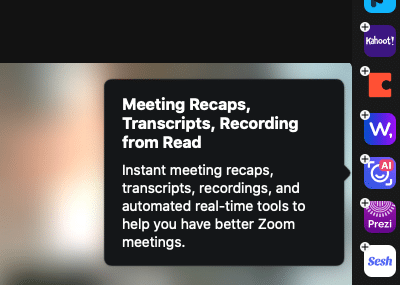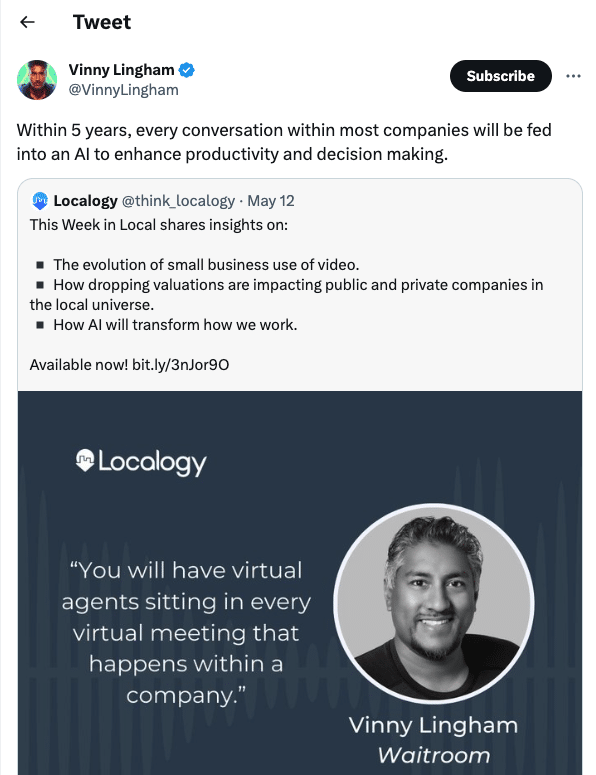We’ve interacted recently with a number of voices making a similar, intriguing point. Using artificial intelligence, organizations can use videoconference content — even dreaded weekly check-in calls — as a powerful data resource for making impactful management decisions.
The idea behind this notion is actually pretty straightforward. Think of AI as the extra attendee in every meeting, taking notes (and names?) and feeding these notes (i.e., transcripts) into a model that churns out all kinds of insights that will not only make the next meeting better (shorter, involving fewer people, getting more done) but perhaps make the organization having the meeting more effective. For example, by identifying inefficiencies (too many people doing the same thing), highlighting “to-dos” that never seem to get done, killing pointless recurring meetings, identifying the optimal meeting participants, and much more.
What is notable is the number and caliber of entrepreneurs who have flocked to the intersection of AI and video meetings over the past year or so. The three who come to mind are all familiar names in local, software, and/or entrepreneurial thought leadership. Roam‘s Howard Lerman (ex of Yext), Read‘s David Shim (ex of Place, Foursquare), and Waitroom‘s Vinny Lingham (crypto guy, Yola founder, and South African Shark Tank investor).
For example, on the most recent episode of Localogy’s This Week in Local podcast, Roam founder Howard Lerman said the following.
What you’re going to see are people saving huge amounts of meeting time. AI will be able to suggest that this person shouldn’t be in this meeting, AI will be able to say this, you know, imagine your meeting right now, and you start meandering in a brainstorm. And if it’s about a topic that there’s a subject matter expert for, AI can suggest we grab this person [and bring them into the meeting] if they’re available.
Ep. 26 Looks at the Future of Work with Roam Founder Howard Lerman
Remote Tech
Roam is a future-of-work startup (occupying a space we have dubbed “remote tech”) that exists to use software to reinvent how individuals interact within organizations. Lerman’s favorite stat is that the average meeting length on the Roam platform is 8:32 (down from 8:36).
At the L23 Conference in April, Lingham made it clear that AI must be at the center of how organizations think about videoconferences going forward. Here is some of what he said at L23.
If you have one thousand employees and four to five thousand meetings per day, how do you activate, and coordinate across the organization? If the production team is having a meeting and something is delayed. And the logistics team is having a meeting and they don’t know that. Wouldn’t it be cool if AI just automatically gave a report to the right manager or to the CEO that said, We have a conflict. These things are happening within the organization.
And Shim built his startup Read entirely on the notion that the future of meetings will be built on AI.
Ep. 20 Shares L23 Voices from Soci, Circumference Group & Waitroom
Read stands apart from Roam and others in one key sense. It is teaming up with Zoom as a complement rather than positioning the product as the “anti-Zoom”.
Read is available in Zoom’s app store. Though Zoom did recently announce its own solution for applying AI to video meetings.


What we would expect to see emerge soon (and probably already) is the application of AI to the conference experience. From how to extract more value and insights from event content (probably the lowest-hanging fruit here) to how to make business development efforts more effective and efficient. And so on.




